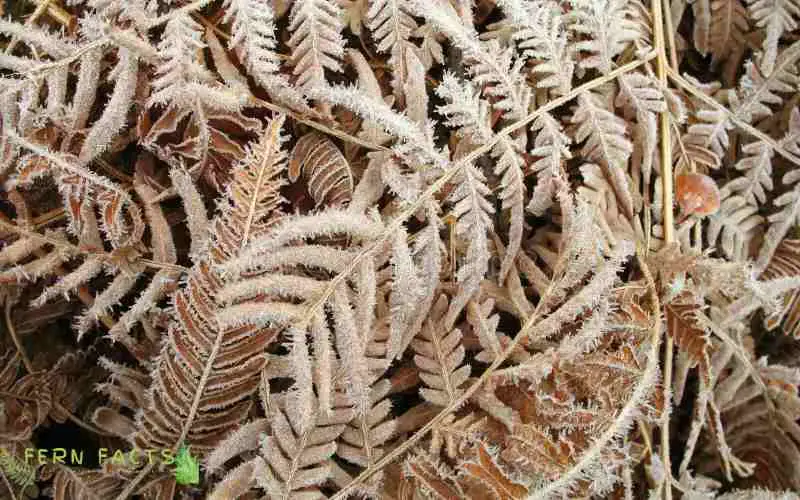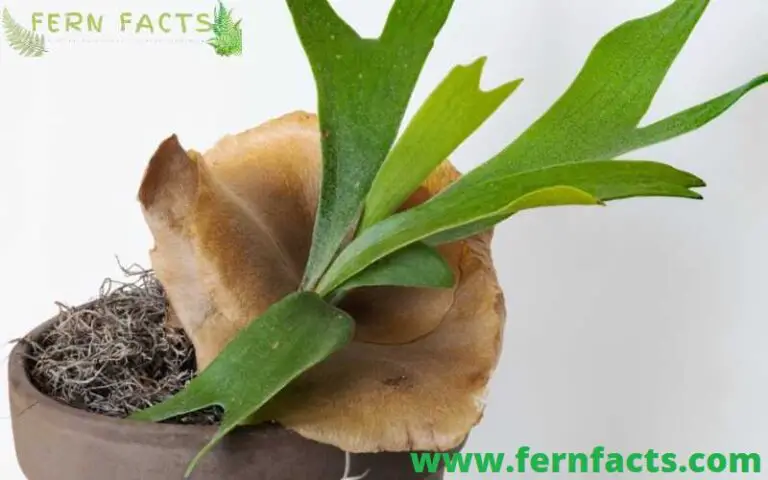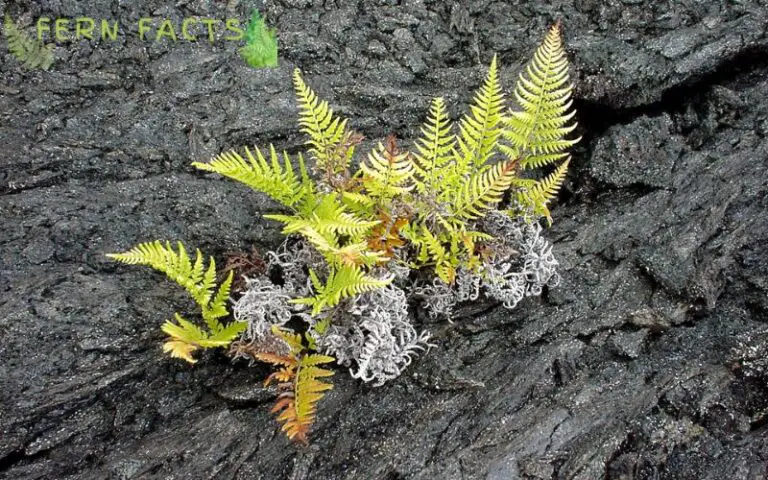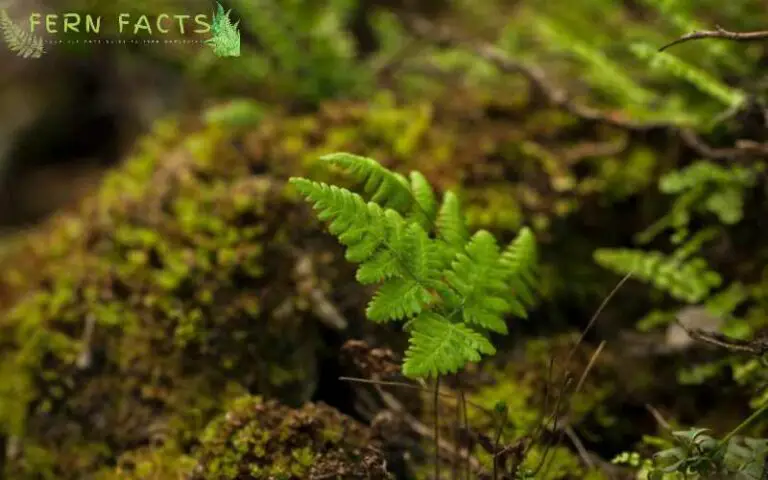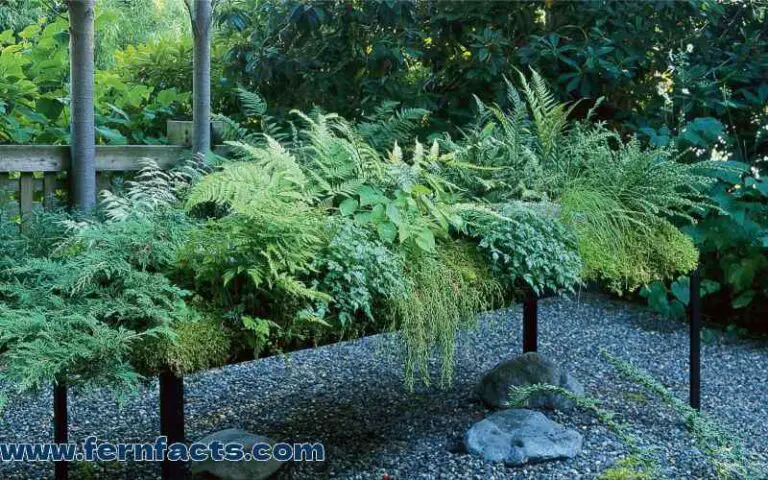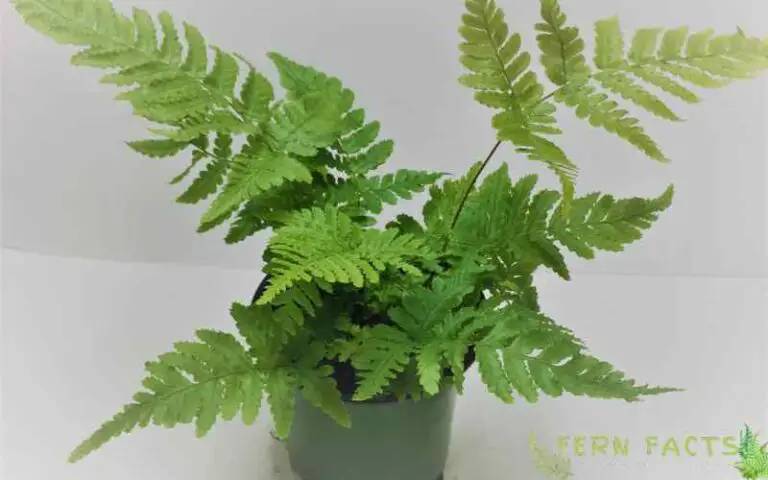Do Ferns Die Back in Winter?
If you are wondering whether ferns die back in winter or not, then don’t be worried. Because we will discuss this situation here.
Ferns are one of the most commonly cultivated for all plant lovers because of their numerous characteristics. Sometimes ferns can be tricky to comprehend their growing characteristics.
Consequently, some ferns die back in winter and some remain green throughout their growing season. That’s why ferns need to be protected during extreme cold seasons so that they can survive and grow back again.
In this article, I’ll illustrate whether ferns die back in winter or not along with giving you some listed ferns of deciduous and semi-evergreen plants.
Later on, I’ll give you a little guidance so that you can protect your plants from winter. So let’s delve into the topic.
Do Ferns Die in Winter
In general, there are two types of ferns, the first one is evergreen ferns and the second one is deciduous ferns.
Evergreen ferns last throughout the years whereas deciduous ferns are seasonal and die in winter seasons. Deciduous ferns naturally turn brown and die in between the fall and winter seasons.
However, there are lots of semi-evergreen fern varieties that also get little termination during their growth period.
Sometimes evergreen ferns can die due to the extreme weather conditions if it’s not well protected.
There are many existing varieties of deciduous plants in which fronds will fall off and flowers will lose their leaves.
Few ferns also survive through the winter, which are perennial plants that grow new fiddlesticks from the rhizomes in the soil during the spring seasons.
Similarly, annual plants need to sow the seed and germinate every year to regain new fresh plants.
It’s not that relevant that whether the plants are evergreen or deciduous, they can still die in the winter due to certain circumstances.
However, native plants are well adapted to the natural climates that’s why they have survival tactics.
But in houseplants, it is very important to check plants’ credibility and whether they can tolerate cold hardy weather or not.
Popular Deciduous Ferns
Let’s go through some popular deciduous ferns that lose their greenery foliage in winter seasons and stay dormant during those cold seasons.
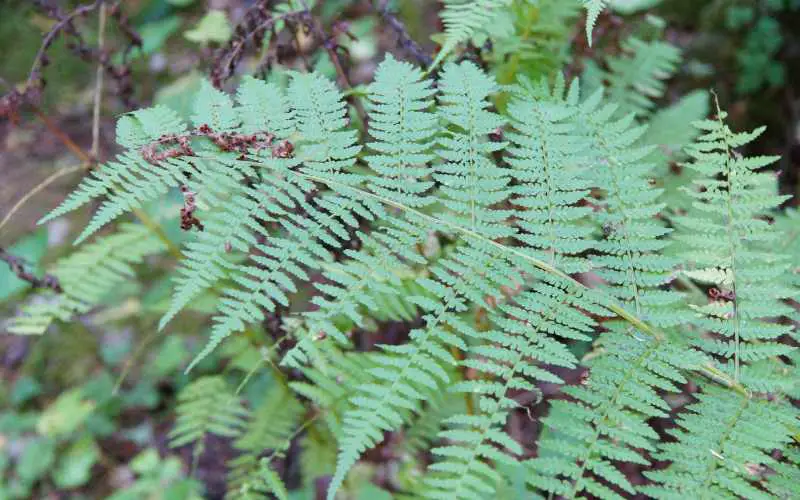
1. Lady Ferns
- Botanical names: Athyrium fix-Femina
- Plants: Deciduous plants
- Shade: partial shade or full shade
- Height: around 1 m
- Soil: acidic or neutral. Moist, poor drainage tolerated
- Temperature: 50- 80 F
- USDA zone: 4,5,6,7,8,9
Lady fern species are popular deciduous plants that will lose their leaves on a seasonal basis and will bloom again next year.
These feathery lady ferns are usually native to Asia, Europe, North Africa, the United States, and Canada. They can also have survival tactics in Alaska given the right environment.
These ferns can grow best in damp moist, shady woodland areas. Furthermore, Lady fern can tolerate -20° C or -4° F in the environment.
These lady ferns are also considered one of the easy-growing ferns among other fern species. They crave fully shaded places with the right moisture level. However, they can still survive under the full sunlight conditions if their soil is moist and hydrated.
To mix their soil, you need to use acidic or neutral soil. As they have poor drainage tolerance, you need to give them a well-draining system so that extra water can be drained out easily.
Moreover, it will be a great option in your garden that will give your garden a greenery look due to its light green color.
2. Japanese Painted Ferns
- Botanic name: Athyrium niponicum
- Plant type: deciduous perennial
- Size: around 1-3 ft tall, 1-2 ft wide
- light: bright and indirect sunlight or partial sunlight
- Soil: neutral acidic, alkaline, moist well drained
- Temperature: 50- 80 F
- USDA zone: 4,5,6,7,8,
Japanese painted ferns are also deciduous ferns that basically belong to the Polypodiaceae family with beautiful color-coordinated foliage in an arching habit.
These ferns are mostly local to eastern Asia. They have colorful foliage usually 30 to 75 cm long. These Japanese-painted ferns would be the best option for your garden because of their color and intricate texture.
These ferns need alkaline, neutral acidic soil which will help them to grow actively. Later on, these ferns also prefer a cold humid atmosphere with moist soil.
Similarly, they are highly intolerant of direct sunlight, which is why they need partial or fully shaded places to grow and develop.
3. Ostrich Ferns
- Botanical name: Matteuccia struthiopteris
- Plants: Deciduous perennial
- Shade: partial or fully shaded
- Height: around 3 to 8 ft
- Width: up to 3-5 ft
- Hardyzone: 3, 4, 5, 6, 7
- Soil: acidic soil (5- 6) pH, moist, organic matter
Ostrich ferns are another deciduous plant which have crown shape or colony-forming ferns.
These ferns develop growing habits with a completely vertical crown shape on the ground. Moreover, these plants lose their fronds during the winter seasons where they lose their beauty.
Especially during extreme winter and cold seasons, if they are not protected, their situation will be more vulnerable.
If you are planning to buy these ferns in your garden, note that these ferns need extra care to grow and it’s quite expensive. Therefore, you need to raise your budget to buy these deciduous plants.
4. Cinnamon Ferns
- Botanic name: Osmundastrum cinnamomeum
- Plant: Perennial deciduous
- Soil: acidic soil, clay, sand, well-drained, moist
- shade: full to partial shade
- Height: around 1 to 3 ft
- USDA Zone: 3-9
Cinnamon ferns have densely matted wiry roots with bright green color, foliage texture, and soft texture.
These ferns are mostly local to America and eastern Asia along their natural habitats being woodlands, bogs, and swamps.
They generate their breeding by producing spores while spores can grow within a couple of weeks.
As they are deciduous plants or perennial plants, they grow and shine all the summertime, and turn yellow before dying in the winter seasons.
Moreover, these ferns also contribute to medical purposes like cold remedies, gynecological issues, and snake bites as well.
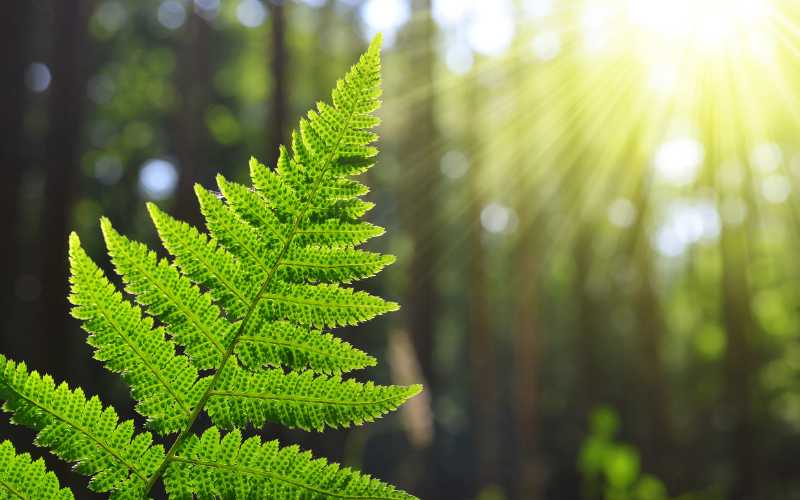
5. Male Ferns
- Botanical name: Dryopteris filix-mas
- Plants : Deciduous plants
- Shade: Need partial or full shade
- Height: up to 1.5 m
- Soil: acid, neutral or alkaline. moist, poor drainage tolerated
Male fern is also a deciduous fern which means it will lose its fronds at the end of the season and will be dormant in the winter seasons or until the nest year.
These ferns are very familiar in the Northern Hemisphere like Europe, Asia, and North America. These fern species prefer partial or full shade for their growing.
These fern species’ height extended up to 1.5 m or 150 cm long. This male fern can adapt itself to the environment.
And so, they can survive through the dried soil as well. Similarly, this fern is also used as a medicine in traditional times as it can kill tapeworms.
Therefore, you need to keep in mind that you must not taste the fern because it can cause you death.
Popular Semi-evergreen Ferns
Now look at some ferns which are semi-evergreen. These ferns tend to lose their fronds in the middle fall and winter seasons: and regain their fronds in the next seasons.
Similarly, due to heavy or harsh cold weather, they tend to lose their green foliage.
1. King Fern
- Botanical name: Angiopteris evecta
- Plants: Semi-evergreen
- Shade: partial or full sun
- Height: up to 1.5 m
- Soil: acid, neutral or alkaline. moist, well-drained.
- Hardiness zone: 2-8
King fern, also known as elephant fern, giant fern, vessel fern, or Madagascar tree fern in different countries.
More than 300 million years old, these ferns are regarded as one of the longest fronds among other ferns in the world.
These ferns are Semi-evergreen plants which means they lose their fronds for a shorter period of time and gain their new fronds in the starting seasons of their growing.
These King ferns, fronds, or leaves are also used as a medicine to cure cough.
Especially in Thailand, the roots are also being used as a medicine to stop bleeding after a miscarriage.
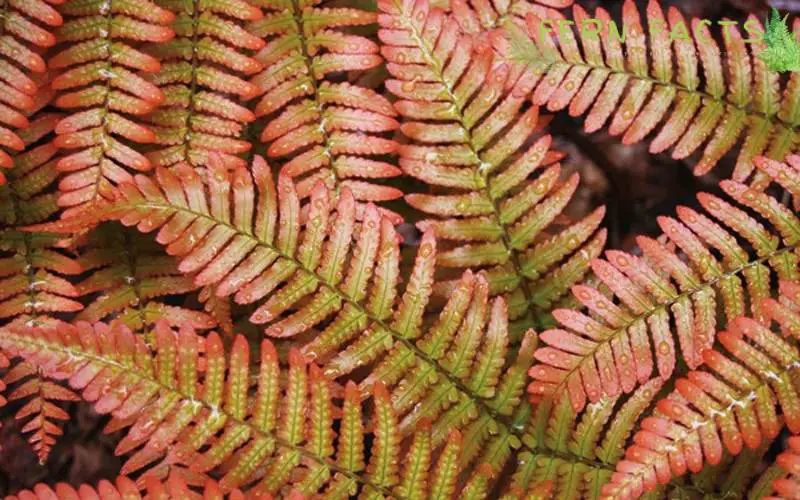
2. Autumn Fern
- Botanical name: Dryopteris erythrosora
- Plants : Semi-evergreen
- Shade: full or partial, adaptable under full sun
- Height: around 1 meter
- Soil: clay, chalk, sand, well-drained, moist tolerance of pH level of the soil with drainage system
- Soil pH: acidic, alkaline, neutral
- Hardiness zone: 5,6,7,8,9
Autumn ferns are semi-evergreen ferns with a vibrant seasonal coloration while growing. Therefore during the seasonal change, these ferns lose their fronds and some die during that stage.
These ferns leave or fronds are funnel-shaped whereas the top one has a leathery shine on it. Throughout the journey from young to mature plants, its foliage color changes. When the plant is young, the fronds have copper tint.
Later when the plants become mature, their fronds transform into a dark green color. Ultimately, in the spring season, this fern’s fronds have bright coppery red or orangish red color.
Gradually the seasons change, and its fronds transform from bright glossy green color to dark green.
3. Holly ferns
- Botanic name : Cyrtomium falcatum
- Plant: Perennial Semi-evergreen
- Height: around 18 to 24 inches
- Width: 24 to 36 inches
- Shade: partial shade or full shade
- Soil: well-drained
- Hardiness zone: 6,7,8,9
Japanese Holly ferns have glossy dark green lush appearances of holly branches. This Holly fern conquers 35 different varieties or species in East Asia.
These types of ferns are mostly native to Eastern Asia such as China, Korea, Taiwan, Vietnam, etc. However, you can still find these ferns in different parts of North America, Hawaii, and Australia as they cultivate these ferns there.
As they are perennial semi-evergreen ferns they also lose their fronds for a shorter period of time. These ferns prefer moist and well-draining soil to thrive and grow.
As it’s an evergreen plant that’s why it can’t survive in icy or frozen countries. Additionally, they need full or partial shade to grow properly.
They are nontoxic plants to animals which means they are not harmful especially cats and dogs.
4. Sunset Fern
- Botanical name: Dryopteris lepidopoda
- Plants: semi-evergreen
- Native range: Himalayas, China, Taiwan, and Myanmar
- Natural habitat: shady forests of coniferous
- Shade requirements: full or partial shade
- Height: around 1 meter
- Soil: acidic or neutral, moist well drained
Sunset ferns are another semi-evergreen colorful ferns that have seasonal coloration during their growing stage.
These ferns have got salmon pink or orangish color in their newly grown fronds which changes to a little bronze color in the mid-level of their growing.
Later, it becomes fully dark green foliage. Thus, these pretty colorful fronds will give the best-looking look inside or outside of your house.
Because of its vibrant coloration, it will give your garden a well-coordinated look with other green plants.
However, they will lose their greenery and colorful foliage during winter seasons which will make them less attractive, still, they will again bounce back in the spring season.
How to Protect Ferns From Cold or Winter
All ferns have some potential risk of sudden frozen situations or cold seasons. Extreme cold-frozen weather can kill or damage any ferns whether the plant is evergreen or deciduous or Semi-evergreen.
Cutting off
If you observe your plants getting dead from cold, then you need to take initiative immediately. If you see your plants’ fronds are turning black, and brown then it’s for sure your plants have started to die.
Therefore you need to be more protective towards your ferns until their new growth starts. You can cut off their dead, damaged fronds to keep them clean and fresh.
Shift Your Ferns
During heavy cold seasons, you can shift your ferns into warm places like a garage or shed house. Those shaded places will keep your ferns warm to some extent.
You can also shift them into your house. For that, you have to rinse your ferns properly to get rid of any bugs, beetles, and insects.
Cover the Ferns
If there is no chance to shift your ferns in the garage or to your house, then you can cover your ferns with plastic wrap or burlap.
This can give them maximum warmth throughout the winter seasons which will help your ferns to last long in the seasons.
Recap
In short, ferns have different characteristics regarding their varieties and features. Some are evergreen and some are deciduous ferns.
However, during the extreme winter season, any ferns can be damaged if they are not well protected.
Therefore, in those seasons you need to give extra care to your ferns to survive them so that they can grow back in spring.

